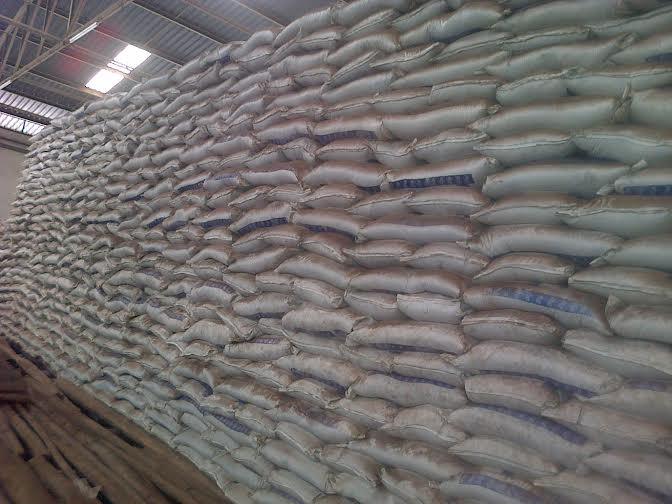The Fertiliser Fall: How Malawi’s Self-Reliance Collapsed Under Imports, Policies, and Poor Planning
Once a symbol of self-reliance, Malawi’s fertiliser production faded over the years leaving farmers and the economy at the mercy of global prices and delayed imports.

Following independence in 1964, Malawi’s leadership pursued a vision of self-reliance. Agriculture was the backbone of the economy, and fertiliser was recognised as the key to improving food production. To reduce dependence on imports, the government took bold steps to develop local fertiliser manufacturing and blending capacity.
Through notable institutions such as the Malawi Fertilizer Company (MFC) and the Smallholder Farmers Fertilizer Revolving Fund of Malawi (SFFRFM), Malawi began mixing and bagging fertiliser within its borders. The country imported chemical components like urea, ammonium nitrate, and phosphate, then blended them locally to suit Malawian soil structures. For smallholder farmers, this ensured access to fertiliser at a time when global supply chains were less reliable.
During those years, fertiliser blending plants created jobs and reduced transport costs. The idea of a locally self-sufficient fertiliser system matched the national ambition for economic independence. But over time, this dream faded.
Several factors led to the gradual decline of Malawi’s fertiliser manufacturing capacity. The first was a lack of raw materials. Malawi does not have large deposits of natural gas, phosphate rock, or potash, which are essential for producing fertiliser from scratch. The country could only blend imported chemicals, not manufacture them fully.
The second factor was high capital and energy costs. Fertiliser manufacturing requires steady electricity and large amounts of fuel challenges that Malawi’s energy sector has long faced. Importing finished fertiliser from countries like South Africa, Zambia, or overseas suppliers became cheaper than producing it locally.
The third reason was economic liberalisation. During the 1980s and 1990s, Malawi, like many other African nations, adopted economic reforms under the guidance of international financial institutions. These policies encouraged the privatisation of state-owned enterprises and reduced government involvement in manufacturing. State companies such as ADMARC and related entities that once managed fertiliser supply were weakened. The responsibility shifted to private importers and distributors.
As a result, the local plants that once blended fertiliser for Malawian farmers lost support. Blending capacity remained limited, and the country turned almost entirely to imported fertiliser.
Malawi’s growing dependence on imported fertiliser has long-term effects on the economy. When global fertiliser prices rise as seen during the COVID-19 pandemic and the Russia-Ukraine conflict the cost of importing fertiliser skyrockets. The government has to spend more foreign currency, placing pressure on Malawi’s already limited reserves.
This dependence also affects the Affordable Inputs Programme (AIP), which provides subsidised fertiliser to smallholder farmers. Because the fertiliser is imported, programme costs increase sharply whenever international prices go up or the kwacha loses value. These expenses strain the national budget and limit spending on other development areas such as health, education, and infrastructure.
Smallholder farmers are among the hardest hit. In years when fertiliser shipments are delayed or arrive late, planting is postponed. That leads to poor harvests and increased food insecurity. For a country where more than 80 percent of people depend on agriculture, such disruptions have devastating consequences towards food security.
The fall in fertiliser manufacturing has also meant lost opportunities for industrial growth and employment. Local production could have created steady jobs for technicians, engineers, transporters, and factory workers. It could have built a domestic value chain where Malawi earned more from its own production. Instead, most of the profits from fertiliser sales now go to foreign suppliers.
The shift has also widened Malawi’s trade deficit, as fertiliser imports take up millions of dollars each year. This weakens the currency and contributes to inflation, which makes farming inputs even more expensive.
Experts agree that while full-scale fertiliser manufacturing may not yet be realistic due to the lack of natural resources, Malawi can strengthen local blending, packaging, and distribution systems. Reviving the capacity of MFC and ensuring that SFFRFM remains transparent and financially stable could make a major difference.
Investing in local blending plants would reduce transport costs, ensure timely delivery of inputs, and create industrial jobs. The government could also explore regional partnerships for example, sourcing raw materials from neighbouring countries and producing blends suited for Malawian soils.
Improved storage facilities and early procurement would also help prevent the late delivery of fertiliser that has affected production in recent seasons. Stronger management of subsidy programmes, fair pricing, and reduced dependence on middlemen would make the system more efficient and less vulnerable to corruption.
Malawi’s history shows that the ambition to manufacture fertiliser locally was not misplaced it was a step toward economic independence. What stopped it were not bad ideas, but practical challenges: lack of raw materials, high energy costs, and policy shifts that weakened local industry.
Today, with food security at the centre of national development, rebuilding some of that lost capacity is not just desirable it is necessary. By focusing on local blending, better planning, and regional cooperation, Malawi can reduce its dependence on imports and strengthen the foundation of its agricultural economy and reduce challenges of scarcity of forex.
Follow and Subscribe Nyasa TV :

